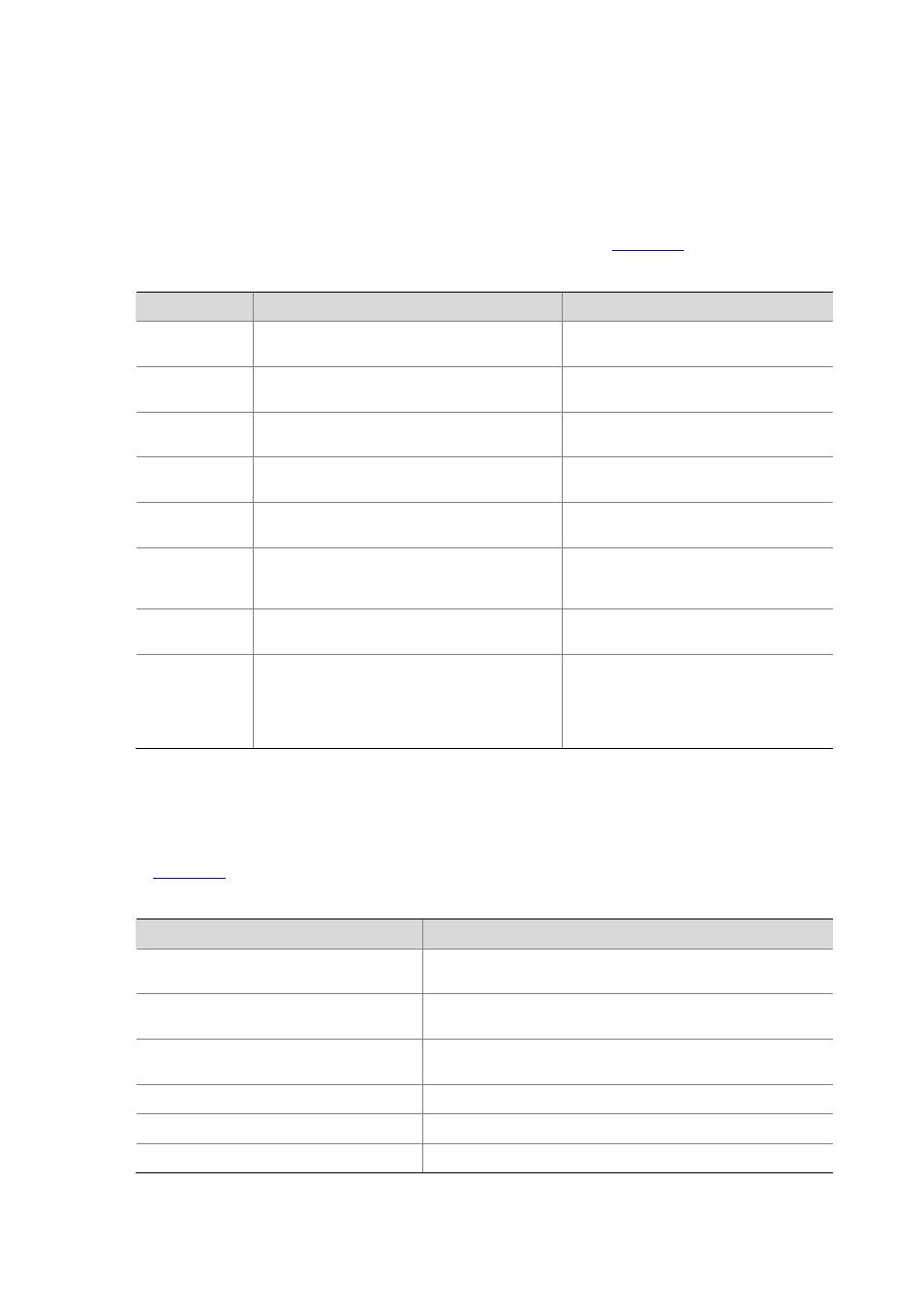Display functions – H3C Technologies H3C WX6000 Series Access Controllers User Manual
Page 570

60-12
The regular expression is a string of 1 to 256 characters, case sensitive, and space allowed. It supports
multiple mapping rules:
z
begin
: Displays the configuration beginning with the specified regular expression.
z
exclude
: Displays the configuration excluding the specified regular expression.
z
include
: Displays the configuration including the specified regular expression.
The regular expression also supports special characters as shown in
Table 60-5
Special characters in a regular expression
Character
Meaning
Remarks
^
Starting sign, the string following it appears only
at the beginning of a line.
Regular expression “^user” matches a
string begins with “user”, not “Auser”.
$
Ending sign, the string before it appears only at
the end of a line.
Regular expression "user$” matches a
string ends with “user”, not “userA”.
.
Full stop, a wildcard used in place of any
character, including blank
None
*
Asterisk, used to match a subexpression zero
or multiple times before it
zo* can map to “z” and “zoo”.
+
Addition, used to match a subexpression one or
multiple times before it
zo+ can map to “zo” and “zoo”, but not “z”.
-
Hyphen. It connects two values (the smaller one
before it and the bigger one after it) to indicate a
range together with [ ].
For example, “1-9” means numbers from
1 to 9 (inclusive); “a-h” means from a to h
(inclusive).
[ ]
Selects one character from the group.
For example, [1-36A] can match only one
character among 1, 2, 3, 6, and A.
( )
A group of characters. It is usually used with “+”
or “*”.
For example, (123A) means a string
“123A”; “408(12)+” can match 40812 or
408121212. But it cannot match 408.
That is, “12” can appear continuously and
it must at least appear once.
Display functions
CLI offers the following feature:
When the information displayed exceeds one screen, you can pause using one of the methods shown
in
Table 60-6
Display functions
Action
Function
Press <Space> when information display
pauses
Continues to display information of the next screen page.
Press <Enter> when information display
pauses
Continues to display information of the next line.
Enter <Ctrl+C> when information display
pauses
Stops the display and the command execution.
<Ctrl+E>
Moves the cursor to the end of the current line.
<PageUp>
Displays information on the previous page.
<PageDown>
Displays information on the next page.